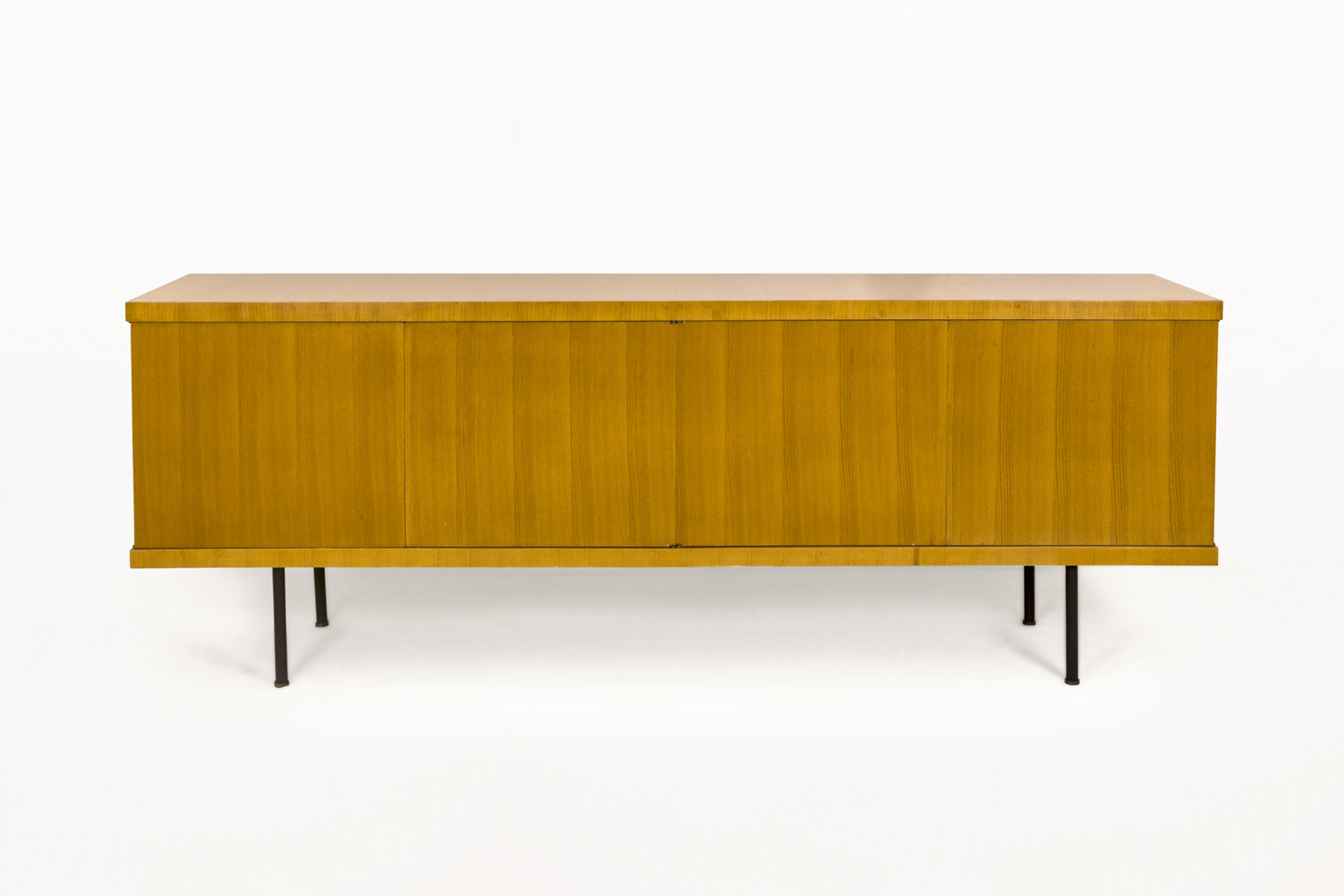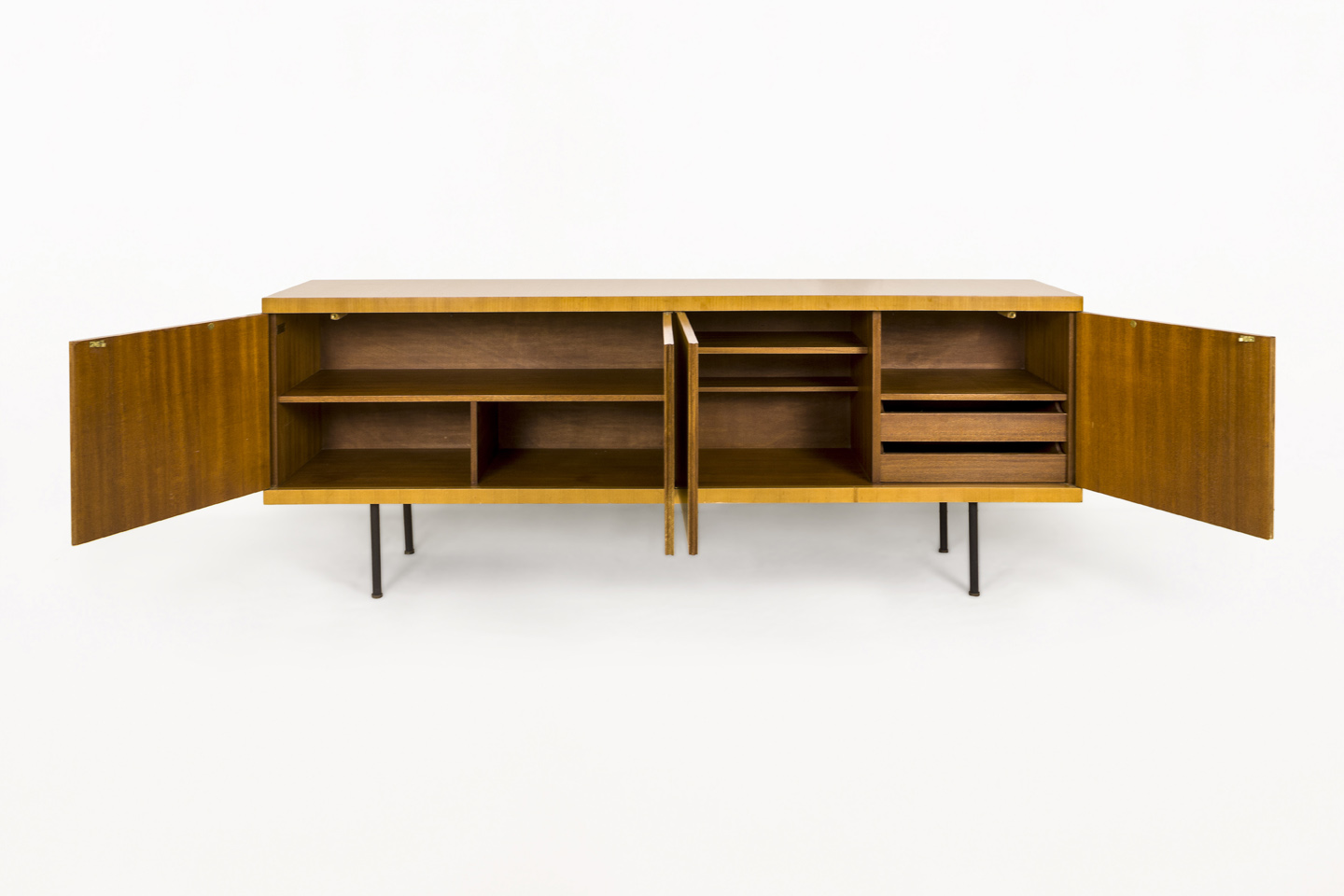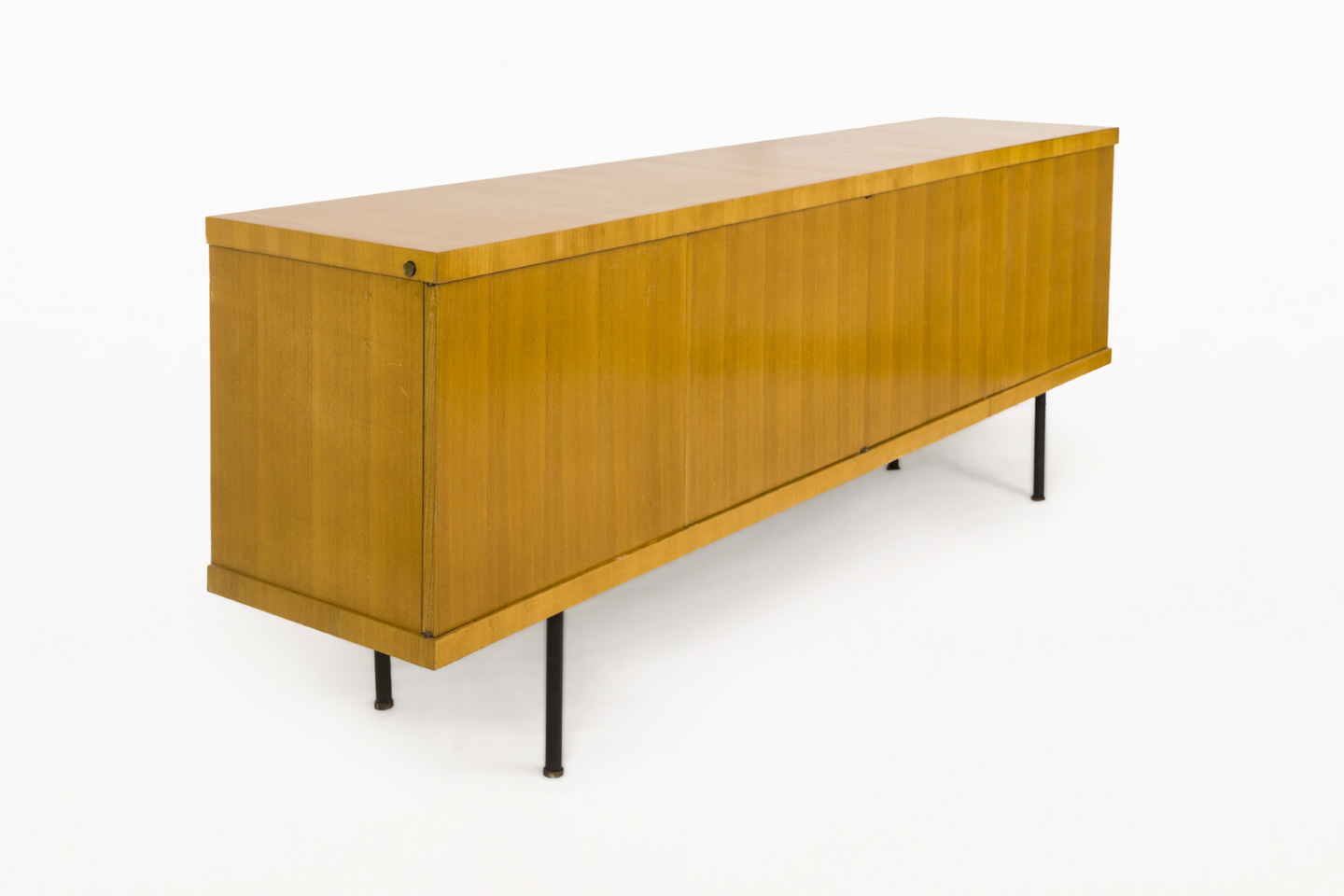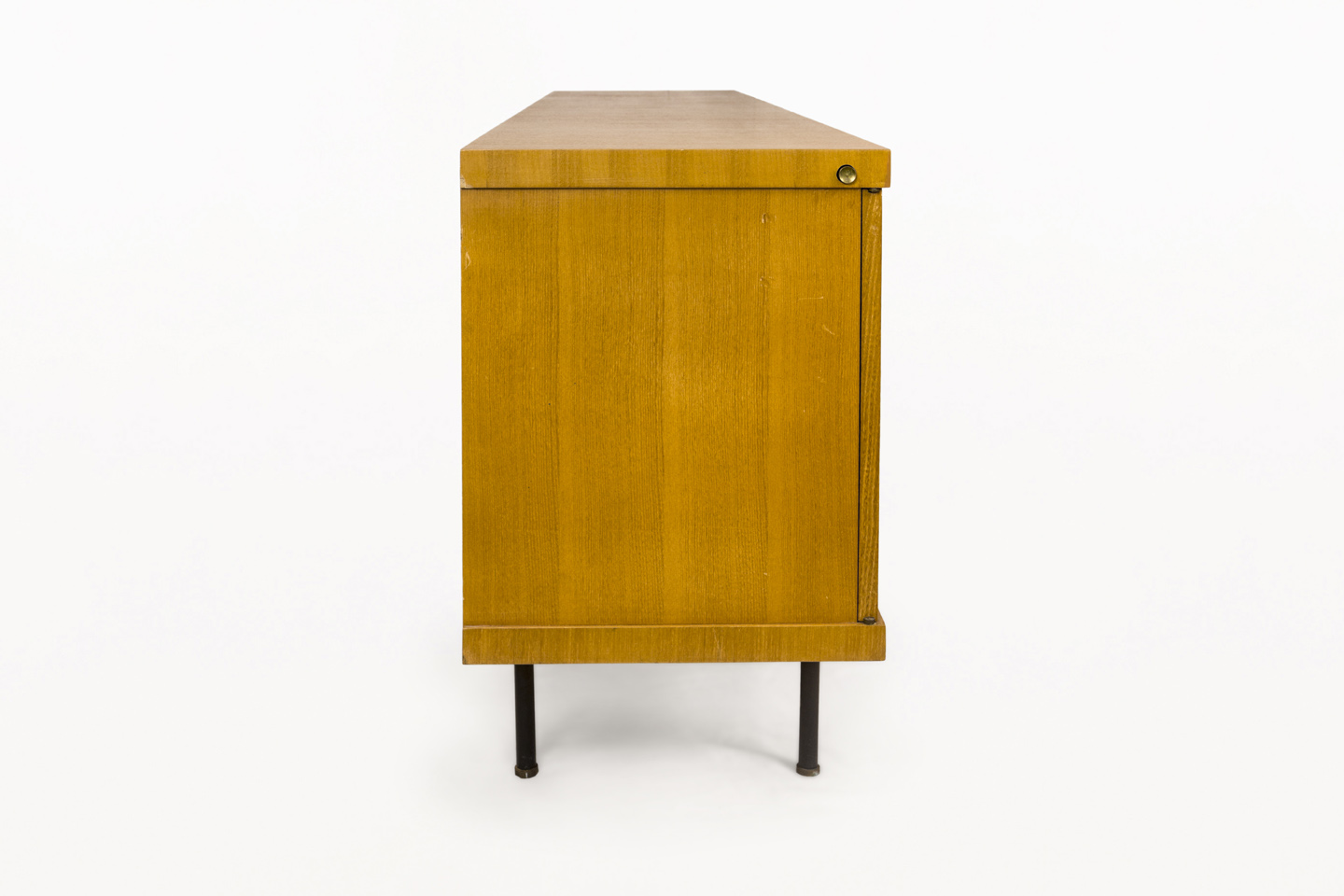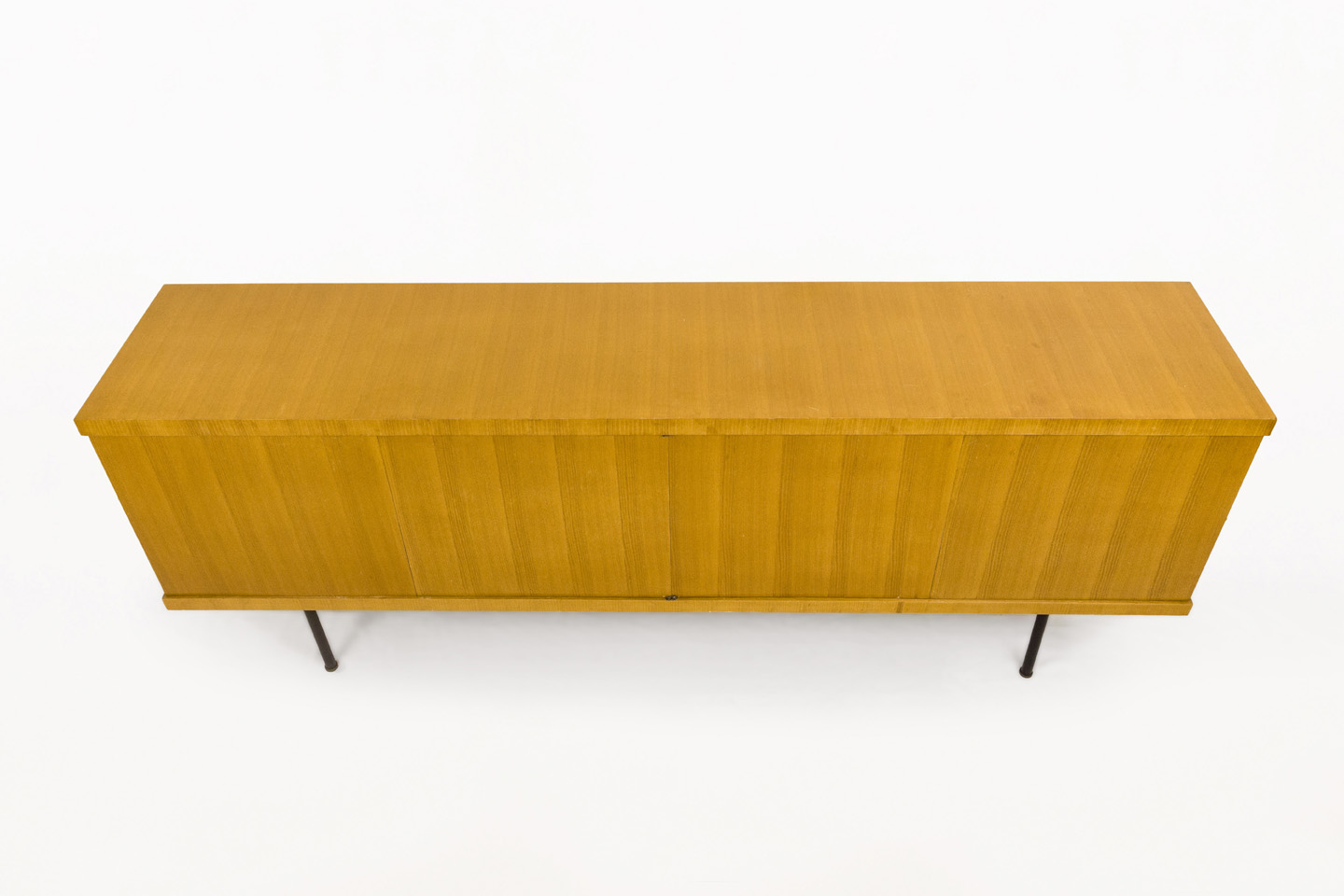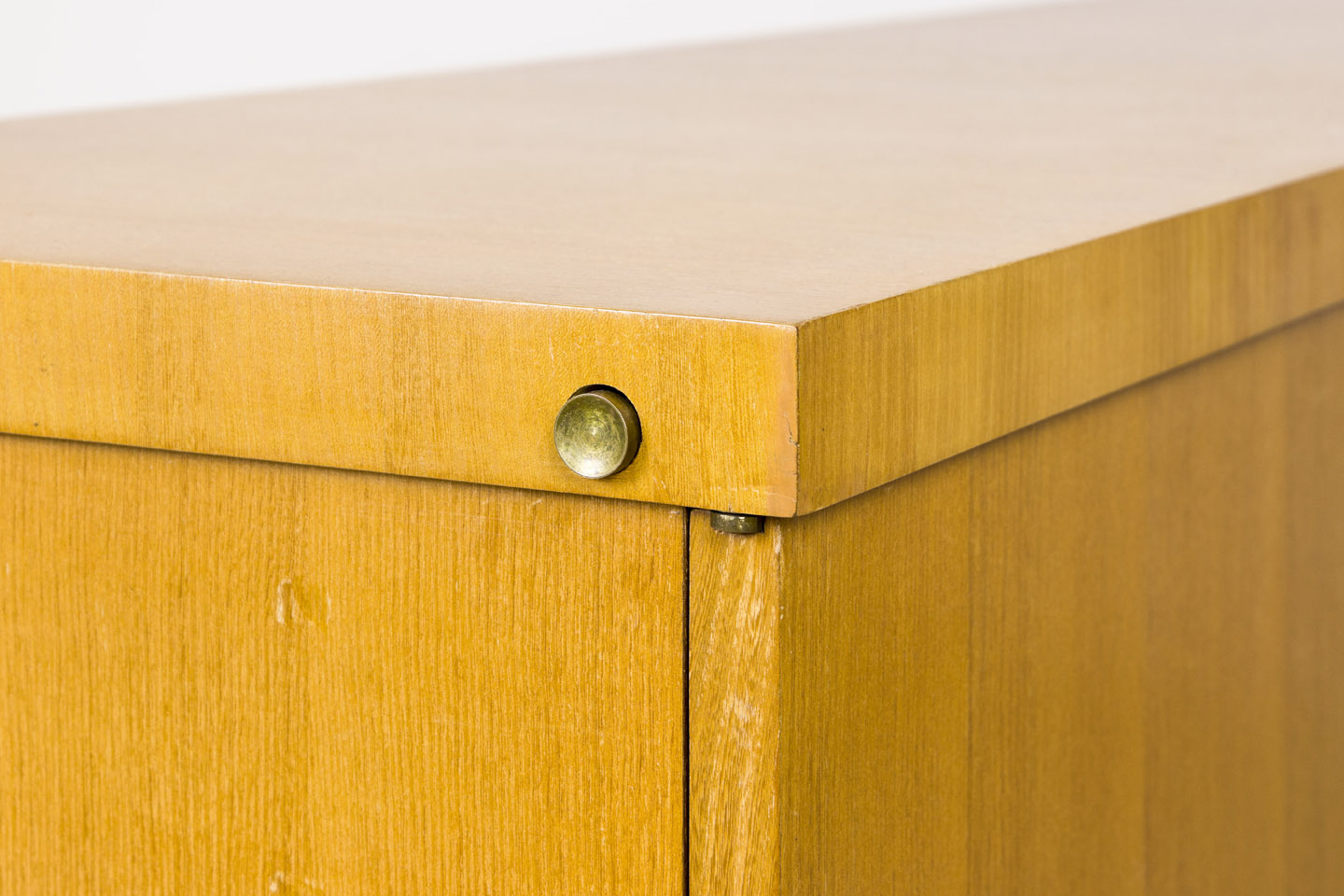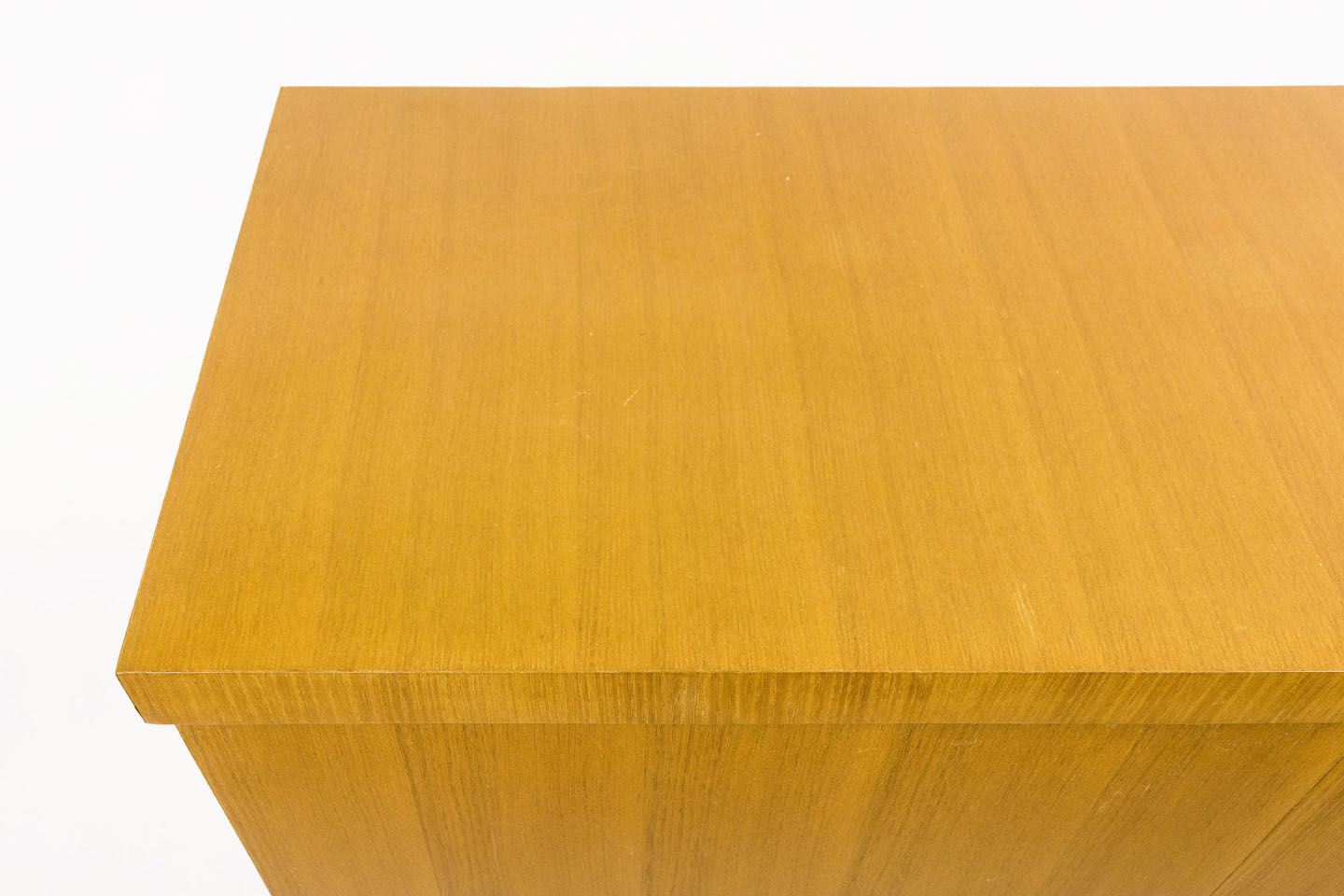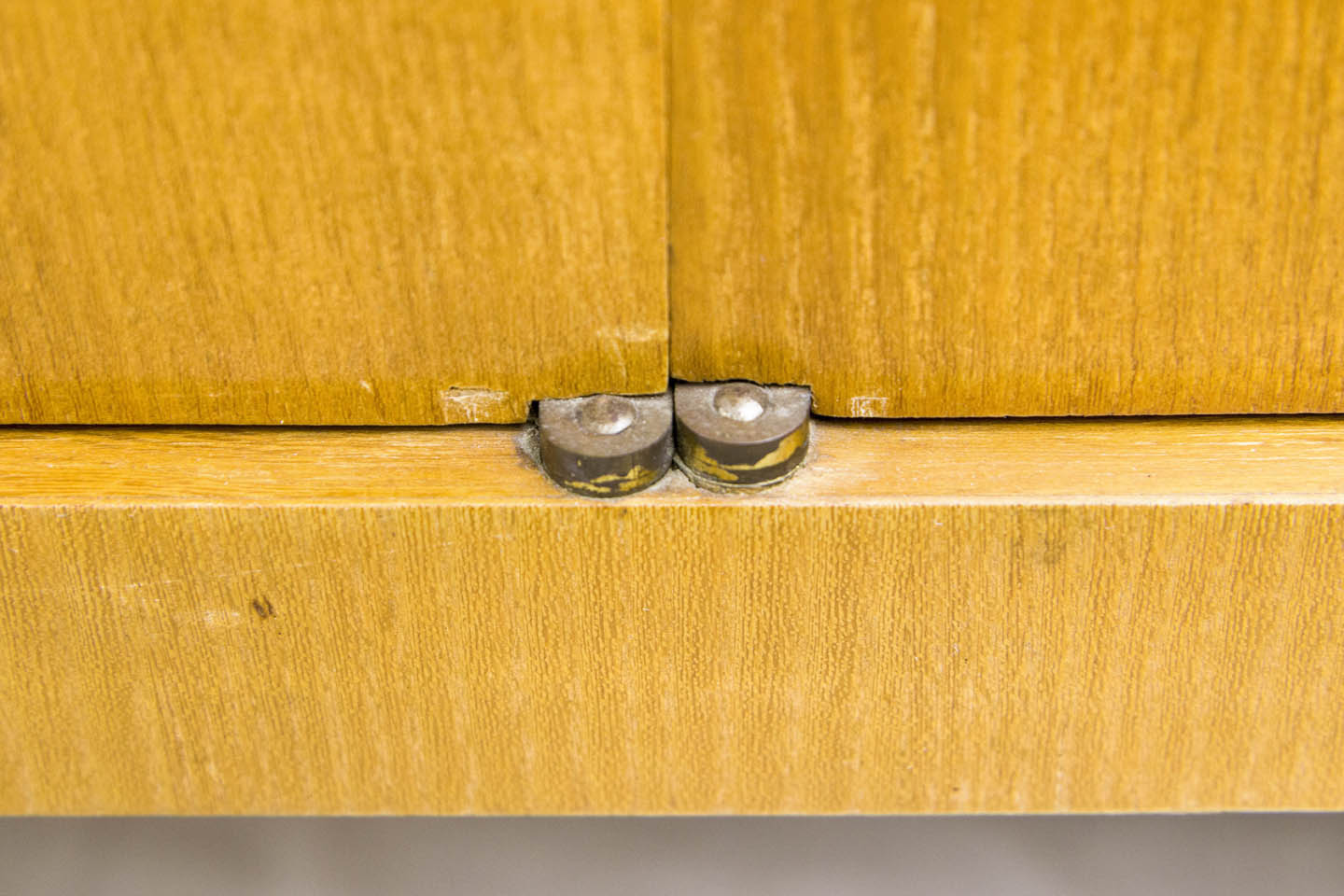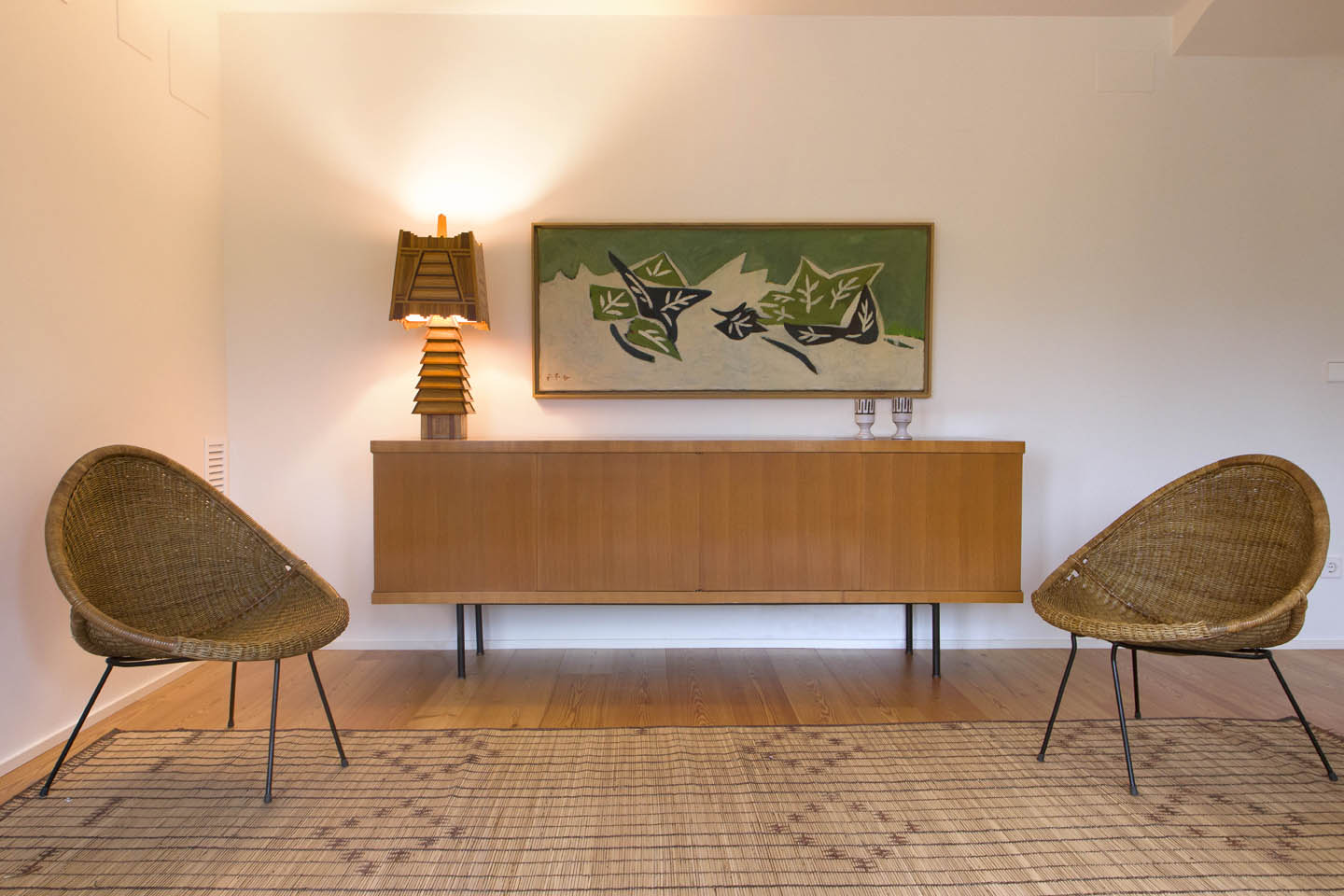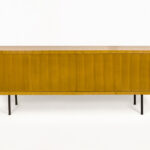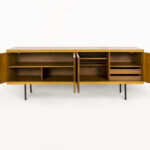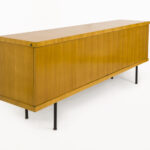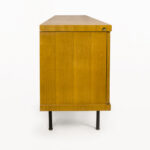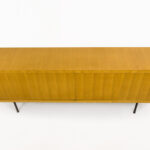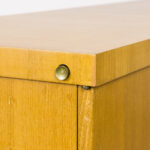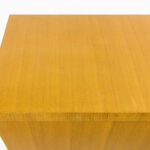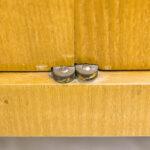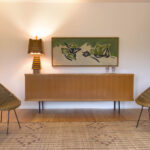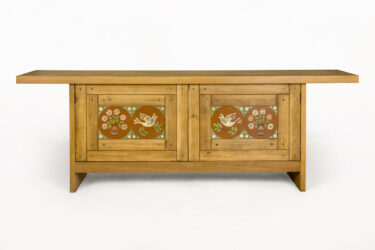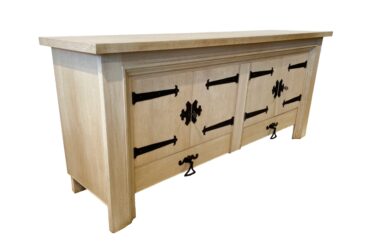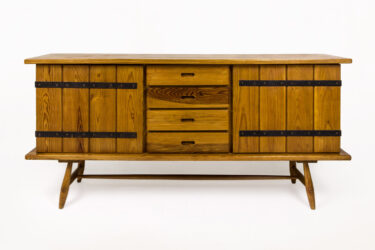Gérard Guermonprez Sideboard “Monaco” for Magnani, circa 1950, France (EN0039)
DESCRIPTION: Gérard Guermonprez Sideboard “Monaco” for Magnani, circa 1950, France. Base in lacquered black metal, main part in veneering elm wood with four doors.
CONDITION: Very good vintage condition. Wear consistent with age and use.
DIMENSIONS: Height: 81cm (31.88in) Width: 220cm (86.61in) Depth: 45cm (17.71in)
ABOUT THE DESIGNER: Gérard Guermonprez is a 20th century French designer known for his simple and functional wooden furniture, renowned for its solidity. Trained at the Boulle school in Paris, he exhibited his creations for more than twenty years at the Salon of Household Arts from 1954. In particular, in 1955 he presented mass-produced furniture in light oak mounted on black lacquered metal bases which were particularly noted. In 1957, Gérard Guermonprez began a fruitful collaboration with the Magnani cabinetmaker workshop for whom he designed interior furniture. Sideboards, tables, chairs, storage furniture with multiple functions… Its pieces bear the label of AMF master craftsmen and certain exclusive creations are even numbered. This partnership increases the success of the designer and allows him to access wider publishing and distribution. Gérard Guermonprez’s models are then distributed in Paris (notably at Bobois, within Roche establishments, and at the At Home store) but also in the provinces and even in North Africa (Casablanca, Oran, Algiers).
ABOUT THE STYLE: Mid-Century Modern (MCM) is a design movement in interior, product, graphic design, architecture, and urban development that was popular from roughly 1945 to 1969, during the post–World War II period. The term was used descriptively as early as the mid-1950s and was defined as a design movement by Cara Greenberg in her 1984 book Mid-Century Modern: Furniture of the 1950s. It is now recognized by scholars and museums worldwide as a significant design movement. The MCM design aesthetic is modern in style and construction, aligned with the Modernist movement of the period. It is typically characterized by clean, simple lines and honest use of materials, and it generally does not include decorative embellishments.

